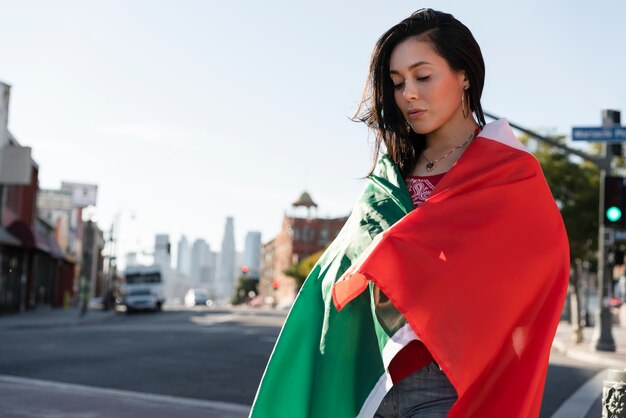Fascinating Facts about Mexico City

Mexico City is the most populous city in North America.
The city was originally built on an island in Lake Texcoco.
Mexico City is located at an altitude of over 2,200 meters.
The city’s historic center, known as Zocalo, is one of the largest public squares in the world.
Mexico City has more museums than any other city in the world, including the famous Frida Kahlo Museum.
The city has over 150 concert halls and theaters.
Traditional Mexican cuisine, including tacos and quesadillas, originated in Mexico City.
The city is home to one of the largest bookstores in the world, the Ciudadela Book Market.
Mexico City hosts the largest Day of the Dead celebration in the country.
The city has a network of canals, reminiscent of Venice, known as Xochimilco.
Mexico City has a vibrant street art scene, with murals adorning many buildings.
The Angel of Independence, a famous monument, is located in Mexico City.
The city is known for its vibrant nightlife, with numerous clubs and bars.
Mexico City has more than 160 parks and green spaces.
The city has a UNESCO World Heritage site called the Historic Center.
The ancient Aztec temple, Templo Mayor, is located in Mexico City.
The city has a network of bike lanes, making it friendly for cyclists.
Mexico City is one of the most earthquake-prone cities in the world.
The city’s subway system is one of the largest in the world.
Fascinating Facts about Mexico City part 2
Mexico City has a rich literary heritage, with multiple Nobel laureates in literature.
The iconic Mexican dish, mole, originated in Mexico City.
The city has a thriving art scene, with numerous galleries and art festivals.
Mexico City is home to the largest university in Latin America, the National Autonomous University of Mexico.
The city’s Metropolitan Cathedral is one of the oldest and largest in the Americas.
Mexico City has a diverse and multicultural population.
The city has a wide variety of street markets, selling everything from food to handicrafts.
Mexico City has its own version of Chinatown, known as Barrio Chino.
The city hosts the Formula One Mexican Grand Prix.
Mexico City has a unique tradition of Lucha Libre, or Mexican wrestling.
The city’s skyline is dominated by the iconic Torre Latinoamericana.
Mexico City was the first city in the world to receive the title of World Design Capital by UNESCO.
The city has a thriving film industry, with several notable Mexican directors.
Mexico City was declared a World Heritage site by UNESCO in 1987.
The city’s street food, such as tacos al pastor and elotes, is renowned worldwide.
Mexico City has a vibrant underground music scene, with various genres represented.
The city has a multitude of colonial-era buildings, showcasing its rich history.
Mexico City is known for its vibrant and colorful traditional festivals, such as Dia de los Muertos and Independence Day.
The city has a network of ecological reserves, providing a refuge for local flora and fauna.
Mexico City is home to the largest bullring in the world, Plaza de Toros Mexico.
The city has a unique architectural mix of ancient ruins and modern skyscrapers.
Mexico City’s National Museum of Anthropology is one of the most important museums in the world, housing a vast collection of pre-Columbian artifacts.
The city’s historic neighborhoods, such as Coyoacan and San Angel, have preserved their colonial charm.
Mexico City has a rich tradition of mariachi music, with numerous mariachi bands performing across the city.
The city has a strong coffee culture, with numerous specialty coffee shops.
Mexico City is a city of contrasts, combining ancient traditions with modern innovation.

